The Complete Guide to Hydrospeed
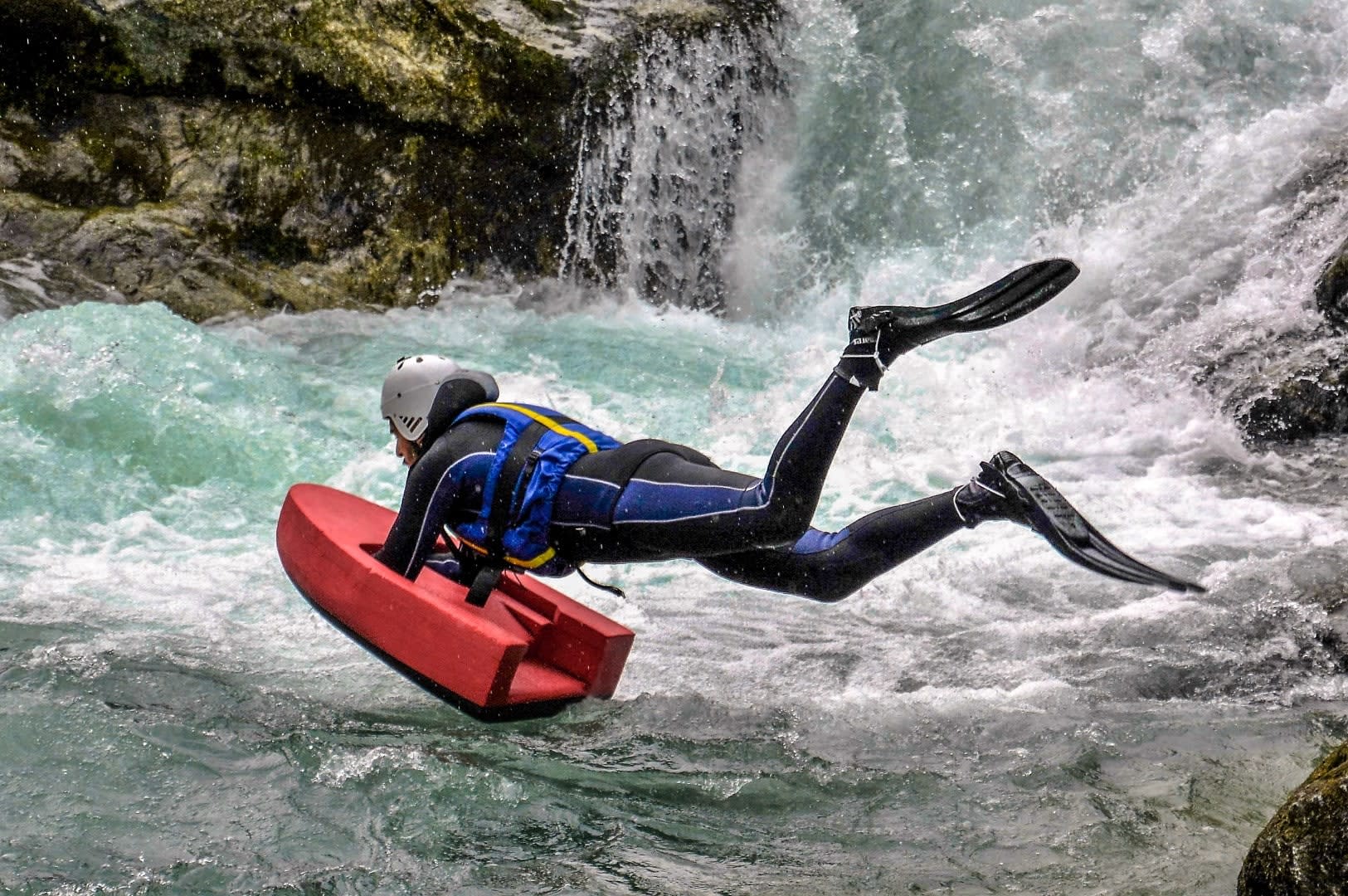
What is Hydrospeed?
Hydrospeed, in its simplest terms, is whitewater swimming aided by a floating board and flippers. This adrenaline-fueled board sport is a great way to get closer to nature. Immerse yourself in the currents, rapids and choppy waters of rivers worldwide – in a way that’s even closer to the action than rafting. Hydrospeed is a thrilling high-octane sport, best experienced in a group, with friends or family.
Hydrospeed requires a high level of physical exertion, but is worth every ounce of the demand required. This level of immersion in the river and the thrill of maneuvering between natural obstacles, is second-to-none. Wearing a padded wetsuit, helmet and having the Hydrospeed board, protects you from rocks or any natural dangers posed by the river’s sides or bed. This sport, if followed correctly (and dependent on the class of river used,) is very safe. Propel yourself down the river and become master of the waves and currents in this fantastic whitewater activity – see all our hydrospeed activities.
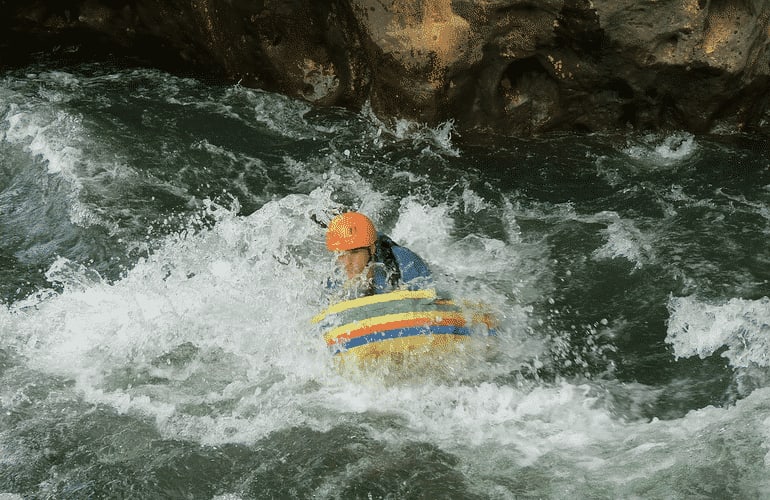
Also known as ‘riverboarding’ or ‘white-water sledging,’ this sport is practiced globally in stunning locations, in different grades of whitewater river. It can be practiced in natural or man-made rivers.
Hydrospeed is generally practiced in the same rivers that whitewater kayaking and rafting are, though it offers more of an adrenaline rush due to the participant being fully-immersed in the whitewater itself, rather than navigating it from a boat. This sport, however, is physically demanding, requiring good grip, to keep on the float and necessitating being a good swimmer – in case the participant loses their hydrospeed float and is required to swim.

Where did Hydrospeed originate?
This thrilling whitewater board-sport is believed to have originated in the 1970s in the French Alps. It is said that a group of rafting instructors were searching for a more full-contact adrenaline rush. Wanting to be immersed in the white water that they were so used to rafting on, these guides decided to swim in the rapids with the aid of life jackets tied together, to form a kind of board. This eventually led to the creation of the Hydrospeed boards of today.
Beginnings of the sport are also noted to have occurred in other areas known for their whitewater, around the globe. Rafting guides in New Zealand, and Californian surfer, Robert Carlson, used their respective waters to play with different ways of immersing themselves and floating in these currents, trying out different designs of board to see which made navigating these turbulent waters the most fun!
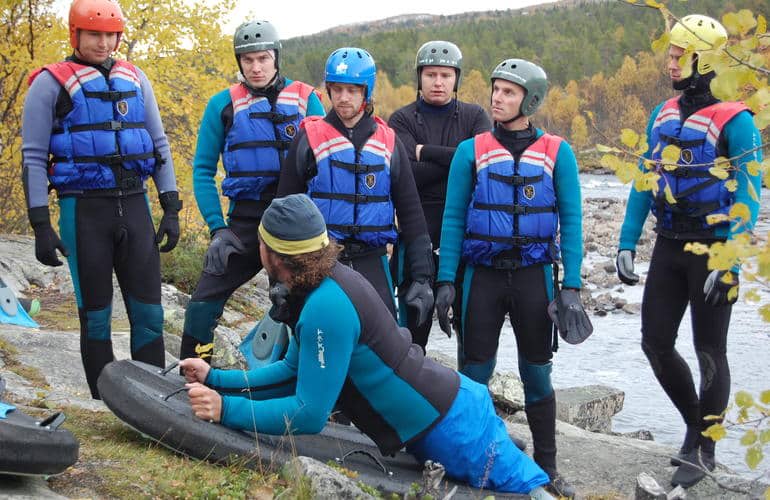
What equipment do I need for hydrospeed?
Hydrospeed beginners will usually not need to bring any sports equipment to the activity site themselves, except the mandatory swimming costume to be worn under the padded wetsuit – provided by the instructor, and a towel for after the activity.
Recommended items to bring include a bottle of water and snacks to be consumed after the activity – as it can be tiring. A dry change of clothes is also recommended, as is sun cream and water shoes or closed toe footwear. Bringing sunglasses that can be worn in water, for use during the activity, is also advisable, depending on the location.
The equipment normally provided by the instructor includes:
A padded wetsuit, so that you do not get excessively cold nor injure yourself against rocks or other naturally occurring obstacles within the water’s course.
A pair of swimming flippers, to propel yourself and swim with more ease.
A Hydrospeed board which will keep you afloat and act as a guard against hitting obstacles in the river’s course.
A helmet and a lifejacket/buoyancy aid to keep you afloat in case you briefly lose hold of your Hydrospeed board.
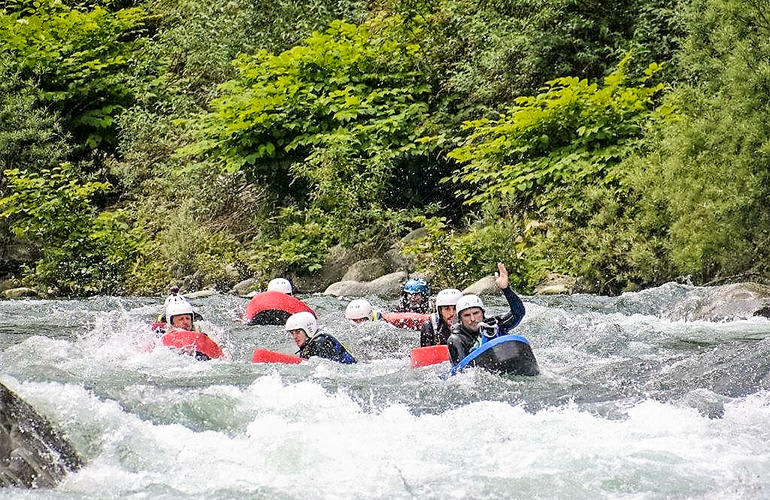
What will I do?
Pre-activity –
A certified instructor will give you a pre-hydrospeed briefing, in which they will give you the necessary safety information as well as some training on the position to adopt in the water, how to hold the float, how they will direct you down the appropriate river course and how to use the fins. The instructor will help you get kitted up, which includes wearing a helmet, life jacket and padded wetsuit. After this, you’ll ease yourself into what might be quite cold water, with your flotation board, and begin your course.
During the activity –
During your riverboarding experience, you will move as a group through the water’s course, following the instructor who will likely be moving by kayak or a different coloured flotation device so that you they are easily seen and their path better followed. Depending on the class of whitewater river that you are undertaking this sport on, you may come across different types of obstacles, and varying sizes of waves.
You’ll gain all the same thrills as whitewater rafting, but with complete immersion in the water. From this position, in the water itself, you’ll be able to fully appreciate the scenic surroundings of forests and mountains, as well as feel the full power of the water that’s working with you, and against you. Prepare to have water splashed in your face, swim against the current and feel the real power of whitewater during your hydrospeed adventure!
Post-activity –
Once you’ve safely arrived at the end of your Hydrospeed experience and have had a short rest out of the water to get dry and re-hydrate, you will most likely, though dependent on the location and activity, be transported back to your starting point or meeting point where you safely left your belongings. There, you can change clothes, get dry and fully appreciate the sheer magnitude and thrill of the hydrospeed experience you just had! Many experiences also include the option to buy video or photographs of your time in the whitewater, which can be a great reminder of all the fun you had, especially if you did the activity with family or friends.

River Classes for hydrospeed
Whitewater rivers have been given an international grading scale that details the danger posed by the speed of the water, power of waves, obstacles within the water and other hazards. Rivers are graded from class I to VI, increasing in rapids strength and difficulty. Riverboarding, if being done by beginners, is usually practiced in a river of a maximum grade 3, higher class rivers may be attempted by more advanced and experienced Hydrospeed enthusiasts – with class VI rivers rarely tried, as they are especially dangerous and almost impossible to navigate a safe route down.
Class I –
Fast moving water that may have small waves but will have an obvious and unobstructed route, or have any route down it possible to be ‘run’ with only slight risk of injury posed to swimmers.
Class II –
Moving water that may contain waves and minor obstructions, with cushion waves, medium-sized waves and some small drops, but low risk of injury. These rivers most likely have wide channels to navigate, with only occasional maneuvering necessary.
Class III –
A notable increase in difficulty, these rivers have moderate/large waves and stoppers, more noticeable drops and stronger currents, but injuries to swimmers are still rare. These rivers and routes are still able to be followed by less experienced hydrospeed participants – as long as they are following an instructor down the river.
Class IV –
This class covers a variety of types of rivers, all featuring severe waves, powerful rapids, drops and a number of obstructions, but can have continuous rapids or pool-drop rapids. These rivers will have a route not easily recognised from the water itself, so the instructor may lead by kayak/canoe to be able to see the course. These pose a higher risk to swimmers with a moderate to high risk of injury.
Class V –
These rivers include long distances of violent rapids and are highly physically demanding, with precise routes to be followed and powerful waves and currents. Class V rapids are dangerous to swim in, even for experts.
Class VI –
The highest class, these rapids are rarely attempted, unpredictable and dangerous and most likely unrunnable.
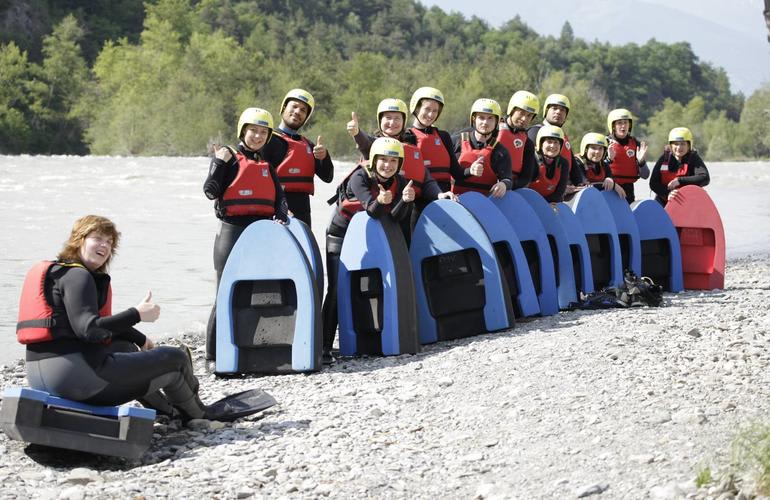
Who can do Hydrospeed?
Minimum Age: This depends on the route and river, but the minimum age for participants can be as young as 8 years old. Minors will be required to show proof that they can swim at least 25 metres and are able to put their head underwater without panicking. Participants under 18 will either be required to be accompanied by a parent or guardian, or need a parent or guardian’s written permission. A good level of fitness and the ability to swim is a requirement applicable to all participants as this is a highly physical sport.
Physical fitness: Participants must be strong enough swimmers to keep themselves afloat in deep and fast-flowing water – this activity is quite physically demanding and requires the participant to be fully immersed in water that is often cold.
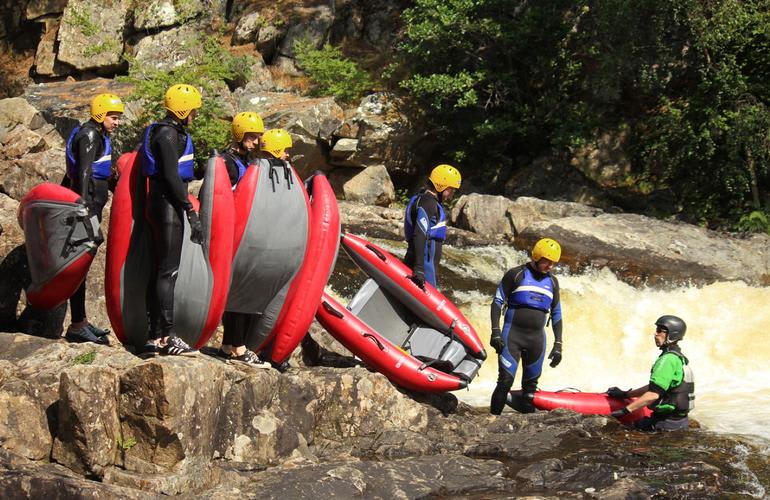
Variations of the sport
Hydrospeed is both a board sport, and a whitewater sport – sharing attributes of both types of sport, such as sharing the locations and a majority of the routes it is practiced in, with sports such as rafting and whitewater kayaking. There are a number of similar sports to hydrospeed in terms of similarities between boards, types of preparation and types of swimming, like open water board sports such as body boarding, which is usually practiced on ocean waves.
Hydrospeed is sometimes practiced during canyoning experiences, as these canyons may lead to suitable whitewater routes, and both sports require a thick, padded wetsuit to be worn, due to risk of injury from rocks. Check out our canyoning activities.
Tubing, another whitewater sport, though a less physically demanding one – as you sit in an inflatable ring and navigate the whitewater from this position, rather than swimming as much as in hydrospeed, is also similar.
Body boarding is an exhilarating open water board sport, which resembles hydrospeed in that they share the attribute of the ‘swimmer’ holding on to a foam floating board and swimming with and against waves. The locations where this sport is practiced differ to those of hydrospeed.
River bugging is another thrilling sport and vastly similar to hydrospeed. River bugging, like hydrospeed, is practiced on whitewater on a similar floating board, known as a River Bug. This River Bug is a larger board with inflatable sides which can also be sat on, unlike a hydrospeed board. Take a look at our river bugging experience on the River Tummel, near Edinburgh.
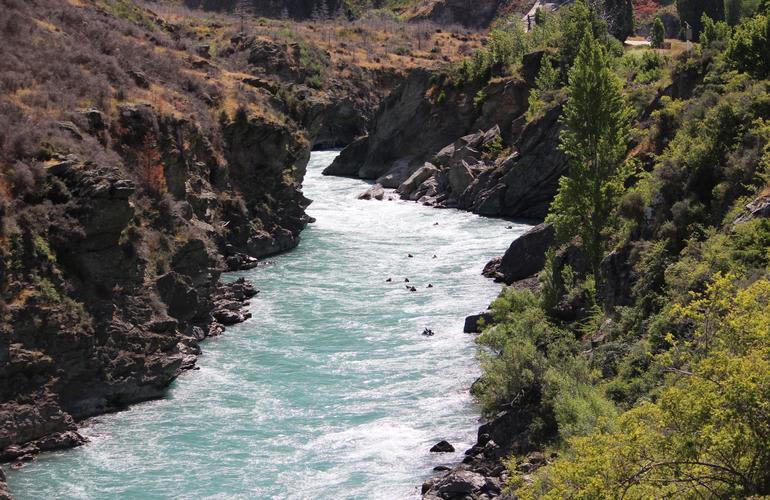
Top locations for Hydrospeed
Practiced the world over, Hydrospeed is predominantly found in mountainous areas, with rocky channels flowing through canyons and valleys the best places to practice this sport. Able to be tried in a number of locations in Europe, including France – see our blog post about the top 5 rivers for Hydrospeed in France, as well as in Oceania, Asia and North America too – locations which feature in our top 8 locations for Hydrospeed worldwide article.
Here are three stunning locations worth checking out to try hydrospeed…
Queenstown, New Zealand –
Try riverboarding down the world-famous Kawarau River, in New Zealand’s South island, (hydrospeed is known as river boarding there). Test your endurance on some grade 2-3/4 rapids featuring whirlpools, strong currents and powerful waves, making your way through rocky canyons as you master these waters.
Murillo de Gallego, Spain –
The beautiful Gallego River, in the north-east of Spain offers thrills aplenty to hydrospeed adventurers. This river passes through some stunning rugged canyons and forested areas and offers an intense 6km descent that will leave you wanting more! See our hydrospeed activities on the Gallego River.
Ubaye river, France –
The Ubaye River, in the south of France – one of the most beautiful (and turbulent) mountain rivers in Europe, offers sunshine, eskimo rolls and stunning scenery. This river offers half days well-spent trying hydrospeed down tumultuous French whitewater. Check out our hydrospeed activities on the Ubaye and Durance rivers.